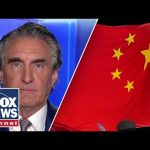In recent days, the streets of Los Angeles and New York have turned into arenas of chaos and strong feelings as protests against Immigration and Customs Enforcement (ICE) escalated. These protests, fueled by opposition to ICE actions, have led to significant unrest, with incidents of violence reported in both cities. Dark clouds hung over California, where protesters clashed with law enforcement, resulting in doors being set ablaze, prompting the deployment of rubber bullets by officers in riot gear to restore order. Meanwhile, across the country in New York, tensions boiled over as nearly 150 protesters attempted to impede federal authorities from carrying out immigration operations, catching the eye of law enforcement, who made several arrests.
As a response to the turmoil, President Donald Trump took action by dispatching 2,000 National Guard members to Los Angeles. This decision came as he criticized local Democratic leaders, arguing that they were incompetent in handling the spiraling situation. He labeled the protests as actions of “paid troublemakers” and emphasized that such conduct would not be tolerated. Trump’s administration is sending a message that it intends to enforce laws and maintain order amidst the tempestuous protests.
The conflict drew further attention during a legal discussion addressing the situation in California. Attorney General Pam Bondi expressed severe warnings suggesting that anyone who obstructs or assaults law enforcement during these protests would face prosecution regardless of their position, whether they be a judge, a congress member, or a demonstrator. As the dialogue unfolded, the narrative centered on the differing perceptions of the state of the city between the President and California’s Governor Gavin Newsom, who argued that the situation was under control and that federal assistance was unnecessary. However, the Department of Homeland Security painted a starkly different picture, claiming federal officers faced a siege during the protests, compelling the President to take decisive action.
In the face of criticism about local authorities’ willingness to prosecute those involved in such protests, the conversation turned to the possibility of federal charges. The looming threat of federal prosecution could make a difference in deterring individuals from assaulting federal officers, as the federal legal system may not be as lenient as local jurisdictions. With many local district attorneys potentially avoiding involvement due to their views on the protests, federal law enforcement steps in as a purveyor of justice, emphasizing accountability for those who challenge authority.
This spotlight on immigration enforcement also includes discussions surrounding specific individuals accused in serious crimes. In particular, a case concerning a Maryland man, recently deported but now facing federal charges upon his return, has highlighted the dangers of illegal immigration. The implications of such cases resonate strongly in communities, where the presence of dangerous individuals can instill fear and concern. Public sentiment about ICE operations and immigration enforcement remains a hot-button issue, reflecting the broader political divide in the nation.
As these events unfold, it becomes increasingly clear that the battle over immigration policy and law enforcement is far from over. With President Trump’s decisive measures and local protests confronting federal authority, this dynamic intersection of community outcry, legal ramifications, and political agendas will undoubtedly shape the discourse surrounding immigration for years to come. As the nation watches closely, the outcomes of these protests and the responses to them will continue to influence both policy and public opinion in ways that are yet to be fully realized.




